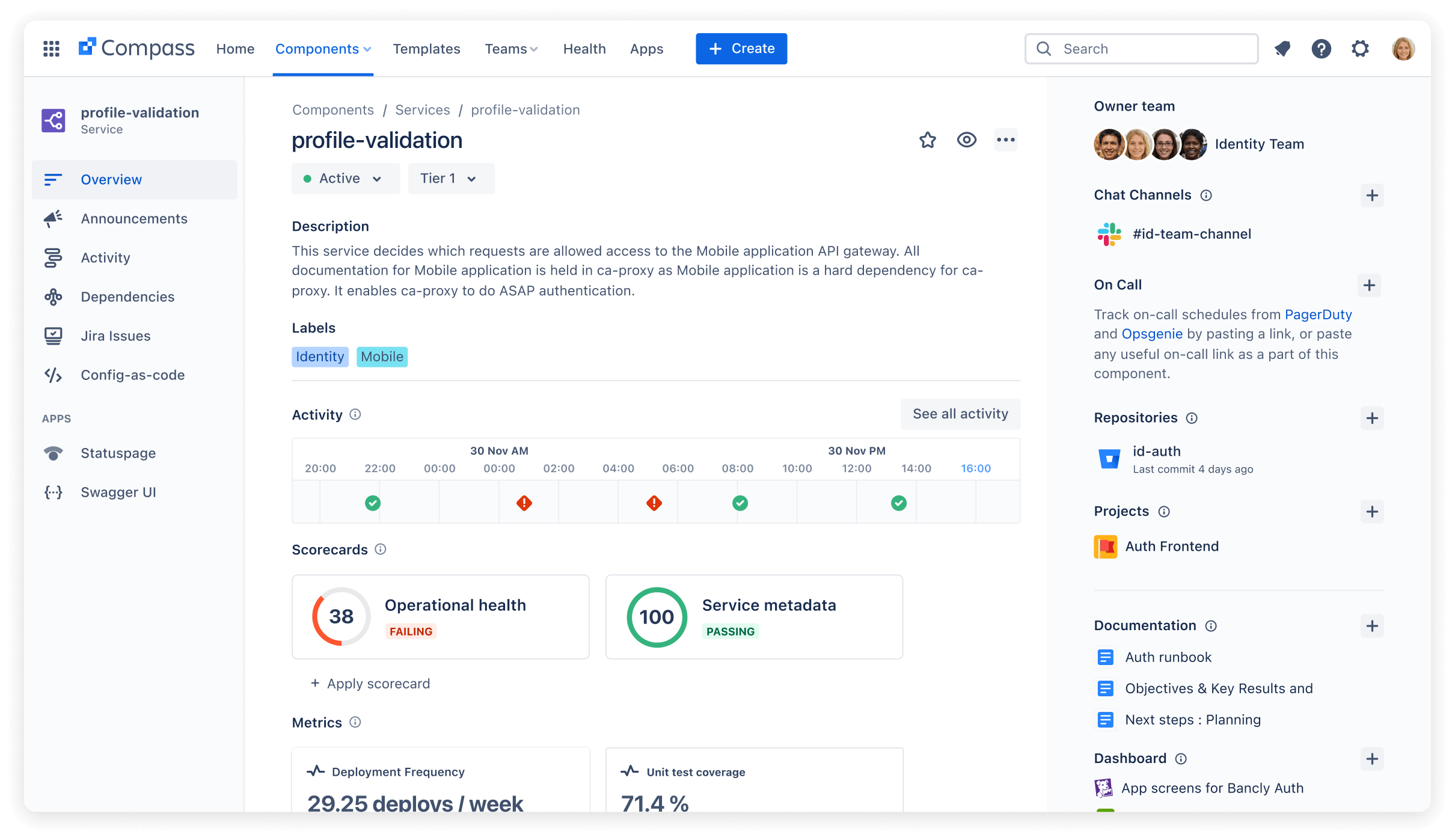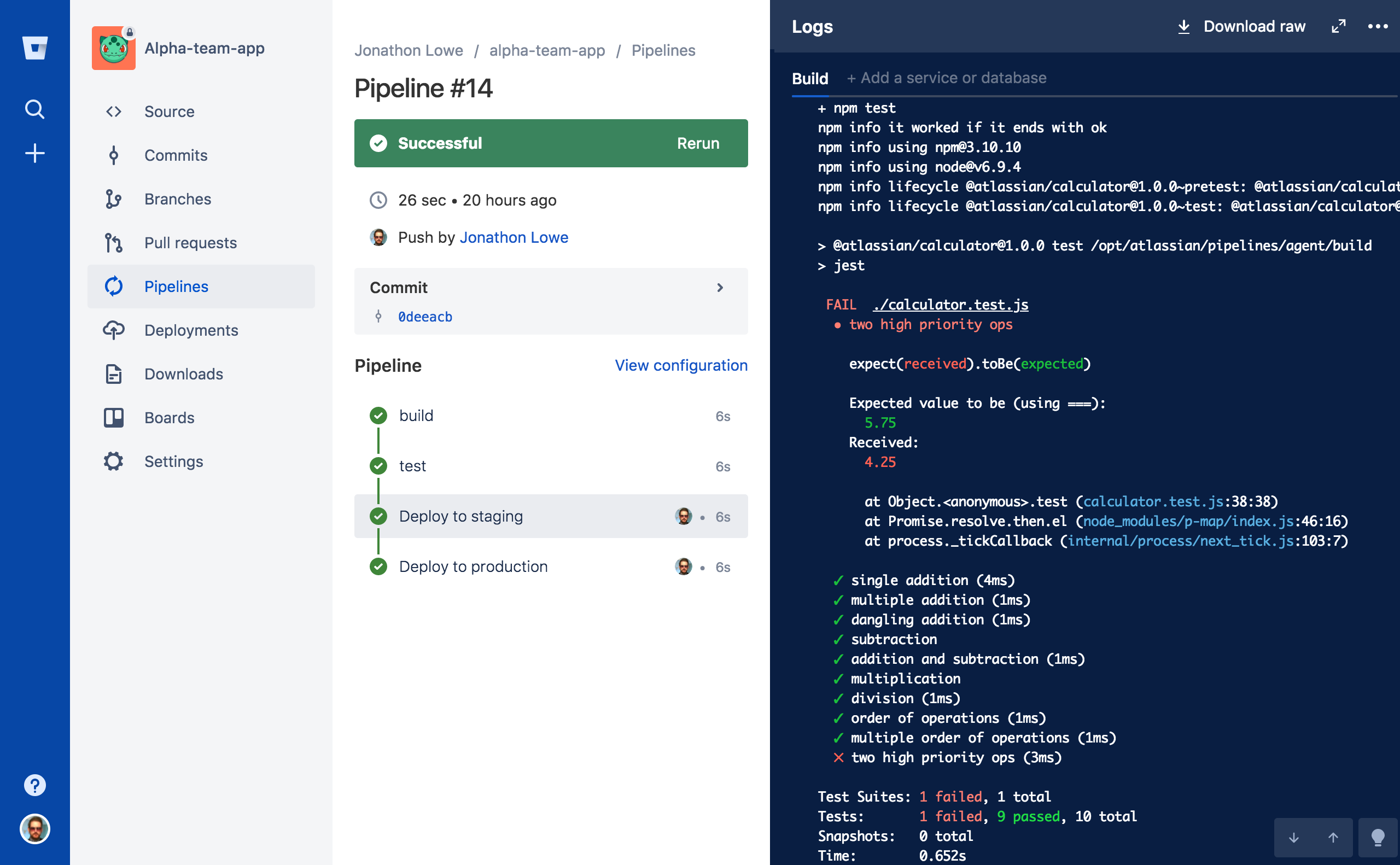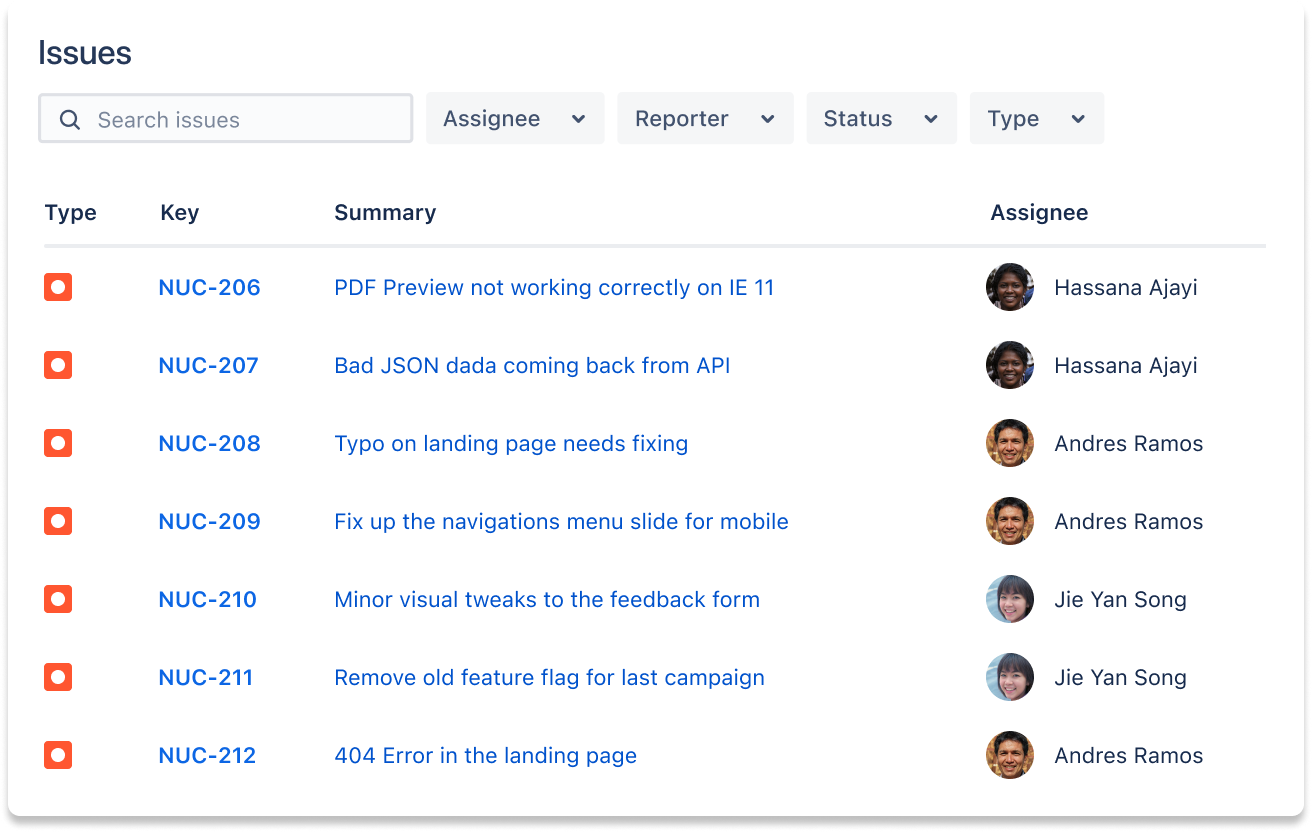マイクロサービスの監視およびテスト・ツール 7 選
マイクロサービスは、ソフトウェア設計に対する人々の考え方を劇的に変え、モノリシック・アーキテクチャからより小さい自律型ユニットへと移行しました。マイクロサービスには適応性があり、拡張可能で、実装が容易です。しかし、この変更によって、これらの分散型システムの監視と更新もより複雑になりました。
だからこそ、マイクロサービスの監視およびテスト・ツールは非常に重要です。マイクロサービスによって各サービスが適切に機能し、全体的な設計に適合するようになるため、システムの信頼性を維持できます。また、チームが問題をすばやく発見して解決できるようになります。マイクロサービスのメリットが多いことを考えると、多数の企業が利用しているのは当然のことでしょう。
アトラシアンの Compass などのマイクロサービス・ツールは、複雑な分散型ソフトウェア・アーキテクチャを理解するために必要なものです。Compass は、拡張可能な開発者エクスペリエンス・プラットフォームとして、複雑な分散型アーキテクチャさに対処することを目的としています。Compass ではエンジニアリングの成果とチームのコラボレーションに関する知識を一元化して組み合わせるため、マイクロサービスの調整が容易になります。
このガイドでは、さまざまな種類、最も重要な機能、市場で最も優れたツール 7 選など、マイクロサービス・ツールの概要をご説明します。
Compass を無料で試す
開発者のエクスペリエンスを向上させ、すべてのサービスをカタログ化し、ソフトウェアの健全性を高めましょう。
マイクロサービス・ツールとは
マイクロサービス・ツールとは、マイクロサービス・アーキテクチャを利用して、アプリの構築、ローンチ、保守を容易にする専門ソフトウェアです。このツールは、ネットワーク・アプリケーションの検索、負荷の分散、構成の管理などの重要なタスクを処理し、マイクロサービス環境をより効率的で安定したものにします。
マイクロサービスは、他のマイクロサービスに API(アプリケーション・プログラミング・インターフェイス)を提供し、2 つのソフトウェア・コンポーネントが通信できるようにすることで、他のマイクロサービスが必要に応じて機能を利用できるようになります。有名な一例には、ストリーミング・サービスを管理する、Netflix の API ゲートウェイがあります。
しかし、すべての API がマイクロサービスと見なされるわけではありません。たとえば、RESTful API はサービス間の通信を促進します。マイクロサービスがアプリケーション開発の方法であるのに対して、REST API は設計の原則と通信方法を重視します。
関連資料
分散するソフトウェアを管理する
ソリューションを見る
Compass による DevEx の向上
マイクロサービス・ツールの種類
マイクロサービス・ツールは大きく分けて監視ツールとテスト・ツールの 2 つのグループに分かれます。マイクロサービス監視ツールは健全性と速度を追跡します。アプリケーション・ログ、メトリック、インフラストラクチャ・コンポーネントなど、さまざまなソースからデータを収集して分析することで、マイクロサービス・アーキテクチャの健全性とパフォーマンスを包括的に把握し、課題を特定してトラブルシューティングします。
マイクロサービスのテスト・ツールは、マイクロサービスがさまざまな状況で期待どおりに機能し、アプリケーションの要件を満たすようにします。マイクロサービスを分離して、および他のマイクロサービスやシステム全体と統合してテストするために利用できます。
マイクロサービス・ツール 7 選
Open DevOps でマイクロサービス・アーキテクチャを効果的に管理する必要のある DevOps チームにとって、特定のマイクロサービス・ツールは不可欠です。これらには、CI /CD、ITSM、ドキュメント作成、バグ追跡、監視とロギング、テストに役立つツールがあります。
利用可能で最適なマイクロサービス・ツールを 7 つご紹介します。
マイクロサービスの管理に最適:Compass

Compass は理想的なサーバー管理ツールです。エンジニアリング作業とチームワークに関する分断されたデータを中央の検索可能な 1 か所にまとめることで、マイクロサービス・アーキテクチャの処理を簡素化します。
Compass の機能は次のとおりです。
- 関連する API、ライブラリ、ドキュメント、主な健全性指標、最近のデプロイ・アクティビティ、オンコール・スケジュールなど、サービスの詳細を完全に可視化します。
- 上流と下流の依存関係を文書化して追跡できます。複数のチームやサービス全体でのパフォーマンスへの影響を把握できます。
- サービスとその依存関係に関するすべてのインシデント、デプロイ、その他の重要なアクティビティを 1 か所で確認できます。
CI/CD に最適:Bitbucket Pipelines

CI /CD は、継続的インテグレーションと継続的デプロイの略語です。
Bitbucket Pipelines はプロセスを自動化する CI ツールです。アトラシアンのクラウドベースのバージョン管理システムである Bitbucket ですぐに動作します。コードを利用してパイプラインを管理できるため、ユーザーはパイプラインの定義をコミットして迅速にビルドを開始できます。Bitbucket Pipelines には CD 機能もあり、プロジェクトをライブ・インフラストラクチャにデプロイできます。
CI/CD 開発プロセスの一部は、マイクロサービスを構築することです。Bitbucket Pipelines では、ワークフローを簡素化し、Bitbucket のクラウド・バージョン管理システムと統合することで、効率を向上させます。
ITSM に最適:Jira Service Management
Jira Service Management は、Jira Software のアドオンで、インシデント、問題、変更管理などの IT サービスを制御できるマイクロサービスベースのアプリケーションです。Jira Service Management の ITSM 機能により、IT チームは優れたサービスを提供できます。その理由は次のとおりです。
- 柔軟性:JSM の協調的アプローチによって、サービス提供プロセスを合理化できます。
- 自動化:自動化スイートによって、繰り返しタスクを自動化できます。
- 統合:JSM は他のアトラシアン・ツールとシームレスに統合します。
- セキュリティ:TLS 1.2+ を利用して転送中のデータすべてを暗号化します。
- 拡張性:JSM はアジャイル ITSM 製品であり、エンタープライズ・レベルまでスケールアップできます。
ドキュメント作成に最適:Confluence
Confluence はコラボレーティブなドキュメント作成ツールです。マイクロサービス・アーキテクチャで重要なドキュメントの作成と共有に最適です。Confluence では、さまざまな設定のための広範な Confluence テンプレートをご用意しています。開発者がコンテナーを構築、デプロイ、実行するのに役立つマイクロサービス・ツールである Kubernetes および Docker を利用するテンプレートなどがあります。
Confluence テンプレートには複数の機能とアプリが含まれており、技術ドキュメントの取得、配布、更新に役立ちます。また、Confluence では、すべてのドキュメントを 1 か所にまとめて、ユーザーが必要とするドキュメントのみにアクセス権を付与できます。
バグ追跡に最適:Jira Software

Jira Software はバグ追跡とプロジェクト管理に優れています。簡単にナビゲートできるインターフェイスによって、バグを効果的に追跡、優先順位付け、解決するためのプラットフォームを提供します。Jira Software のバグ追跡機能は、マイクロサービス管理の成功に大きく貢献します。また、ソフトウェアのスプロール化の可能性にも対処します。
Jira Service Management によって、Jira の機能は、マイクロサービスやモノリシック・アーキテクチャ内でのインシデント、問題、変更管理などの IT サービス管理の合理化にまで及びます。
監視とロギングに最適:Prometheus
Prometheus は、開発者がマイクロサービスの管理に利用するオープンソースのツールです。Prometheus ではカウンター、ゲージ、ヒストグラム、要約など、広範な指標を収集し、アプリケーションのパフォーマンスを包括的に把握できます。また、Prometheus は、包括的な監視および警告システムを提供し、開発者と IT チームが問題を迅速に特定して解決できるようにすることで、リアルタイムのトラブルシューティングが行えるようにします。
マイクロサービス API のテストに最適:Postman
マイクロサービス・アーキテクチャの分散型の性質により、従来のテスト手法は著しく妨げられます。それぞれのマイクロサービスは独立したコンポーネントであるため、システム全体のテストは複雑で時間がかかるものになります。このような場合に、Postman などの特定のマイクロサービス・テスト・ツールが役立ちます。
Postman はマイクロサービス API のテスト・プロセスを簡素化します。開発者は、Postman でテストを自動化し、より迅速かつ正確な結果を得られる点を気に入っています。
Postman でマイクロサービス API のテスト・プロセスを簡素化する方法には、次のようなものがあります。
- ビジュアル・リクエスト・ビルダー:Postman のビジュアル・リクエスト・ビルダーを利用すると、コードを記述せずに HTTP リクエストを簡単に構築できます。
- リクエスト・コレクション:Postman では、API リクエストをコレクションに整理して、関連するリクエストをグループ化し、他のチーム・メンバーと共有することが容易になります。
- 事前定義済みテスト:Postman では事前定義済みテストのライブラリを提供しています。これを利用して、API リクエストからの応答を検証できます。
- テスト・スクリプト:Postman では、JavaScript を使用してテスト・スクリプトを記述できるため、テストをより細かく制御でき、複雑なテスト・シナリオを自動化できます。
Compass でマイクロサービスをより適切に管理する
マイクロサービスは有益ですが、企業が成長するにつれて複雑になることがあります。ただし、アトラシアンの Compass でこの課題に対処できます。
Compass は、拡張可能な開発者プラットフォームであり、すべての重要なデータを 1 か所に表示することでマイクロサービスの管理を簡素化します。エンジニアリングの成果とチームのコラボレーションに関する分断された情報を、一元化された検索可能な場所にまとめます。
Compass には柔軟性があるため、さまざまなマイクロサービスの設定に適応でき、独自のツールや情報を提供します。また、Compass によって、より適切な決断を下し、問題を迅速に解決し、効果的なチームワークを促進することもできます。チームは Compass でシステムの全体像を把握して、課題を発見し、変更を追跡し、質の高いサービスを維持できるようになります。
Compass では、複雑な詳細を処理することで、現在の課題を簡素化するだけでなく、今後の成長や設計の変更にも備えることができます。正確な羅針盤のように機能して、チームが自信を持って明確に、マイクロサービスの複雑さを乗り切れるようサポートします。
マイクロサービス・ツール:よくある質問
マイクロサービス・アーキテクチャで監視とテストが重要な理由は何ですか?
監視とテストは、マイクロサービス・アーキテクチャでは非常に重要です。アプリケーションの信頼性が高く、正常に動作し、全体的に健全であることを、監視とテストによって保証するためです。企業が定期的なテストや監視を完了しなければ、マイクロサービスはユーザーにとって適切に機能せず、アプリケーションは停止し、システムは失敗する可能性があります。
マイクロサービスの監視での一般的な課題は何ですか?
マイクロサービスを監視する場合、サービス間の依存関係の管理、複雑化への対処、データの収集が困難になることがあります。企業がこれらの問題に対処するには、効果的な追跡戦略、ツール・セット一式、開発チームと運用チーム間のチームワークが役立ちます。
マイクロサービスの監視とテストのベスト・プラクティスは何ですか?
マイクロサービスを効果的にテストして監視するには、監視データを使用し、適切なアラート・レベルを設定し、テストを自動化し、継続的インテグレーションとデリバリーのパイプラインを設定し、パフォーマンスとセキュリティを定期的にテストします。プラットフォームは、これらの方法によって確実に動作します。
アトラシアン・コミュニティに参加して、マイクロサービスの記事やディスカッションをご覧ください。
この記事を共有する
次のトピック
おすすめコンテンツ
次のリソースをブックマークして、DevOps チームのタイプに関する詳細や、アトラシアンの DevOps についての継続的な更新をご覧ください。

Compass コミュニティ

チュートリアル: コンポーネントを作成する
